June 1, 2021
by Mikhail Elyashberg, Leading Researcher, ACD/Labs
Isatisindigoticanine I
Ban Lan Gen, Isatis tinctoria L. (synonym Isatis indigotica Fort.), of the Brassicacene family, is a biennial herbaceous plant. It is widely cultivated and distributed in China, where its roots are used in Traditional Chinese Medicine (TCM) for the treatment of many diseases. Ban Lan Gen was studied, and a series of alkaloids were isolated [1].
Zhang et al [1] isolated four previously unknown sulfur-containing indole alkaloids (isatisindigoticanines H, I and isatindigosides F, G) and determined their structures by 1D and 2D NMR, IR, HR-ESI-MS, X-ray crystallography, specific rotation, and ECD data. The structure of isatisindigoticanine I (1) ( molecular formula C24H21N3O5S) is shown below
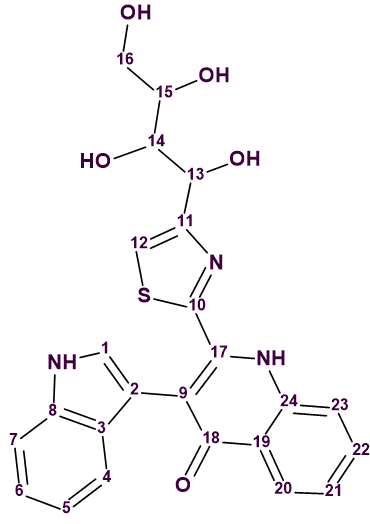
The NMR spectroscopic data published [1] for 1 are shown (Table 1) and were used to challenge ACD/Structure Elucidator. It should be noted that only the key HMBC and COSY correlations were published in [1].
Table 1. NMR spectroscopic data. See text for details on the highlighted red calculated shift.
| C/X Label | δ C | δ C Calc (HOSE) | XHn | δ H | M | COSY | H to C HMBC |
| C 1 | 127.400 | 128.770 | CH | 7.480 | s | ||
| C 2 | 127.500 | 113.530 | C | ||||
| C 3 | 110.100 | 125.740 | C | ||||
| C 4 | 119.500 | 119.380 | CH | 7.080 | d | 6.94 | C 6, C 2 |
| C 5 | 119.500 | 120.410 | CH | 6.940 | t | 7.08, 7.13 |
C 3, C 7 |
| C 6 | 121.700 | 121.830 | CH | 7.130 | t | 6.94, 7.48 |
C 4, C 8 |
| C 7 | 112.300 | 111.130 | CH | 7.480 | s | 7.13 | C 9, C 8 |
| C 8 | 136.600 | 133.730 | C | ||||
| C 9 | 108.900 | 108.490 | C | ||||
| C 10 | 170.900 | 159.510 | C | ||||
| C 11 | 161.600 | 159.360 | C | ||||
| C 12 | 118.000 | 115.670 | CH | 7.450 | s | C 13, C 10 |
|
| C 13 | 69.800 | 71.340 | CH | 5.100 | u | 3.86 | C 15, C 12, C 11 |
| C 14 | 72.400 | 74.120 | CH | 3.860 | u | 3.65, 5.10 |
|
| C 15 | 72.100 | 73.060 | CH | 3.650 | u | 3.68, 3.86 |
|
| C 16 | 63.900 | 63.960 | CH2 | 3.510 | u | ||
| C 16 | 63.900 | 63.960 | CH2 | 3.680 | u | 3.65 | C 14 |
| C 17 | 132.300 | 135.280 | C | ||||
| C 18 | 185.200 | 184.540 | C | ||||
| C 19 | 121.100 | 123.480 | C | ||||
| C 20 | 124.300 | 123.470 | CH | 7.400 | d | 6.89 | C 22, C 18 |
| C 21 | 120.300 | 120.350 | CH | 6.890 | t | 7.40, 7.51 |
C 23, C 19 |
| C 22 | 136.300 | 135.940 | CH | 7.510 | t | 6.89, 7.25 |
C 24 |
| C 23 | 112.700 | 112.730 | CH | 7.250 | d | 7.51 | |
| C 24 | 151.900 | 151.490 | C | ||||
| N 1 | NH | 11.420 | u | C 2, C 8 |
|||
| N 2 | NH | 10.900 | u | C 9, C 17 |
|||
| O1 | OH | 5.40 | |||||
| O2 | OH | 4.45 | |||||
| O3 | OH | 4.62 | |||||
| O4 | OH | 3.84 |
The Molecular Connectivity Diagram (MCD) created automatically by the program is shown in Figure 1. This was only edited manually to indicate that the carbon at 185.20 ppm is a carbonyl, by explicitly drawing a double bond to an oxygen atom.
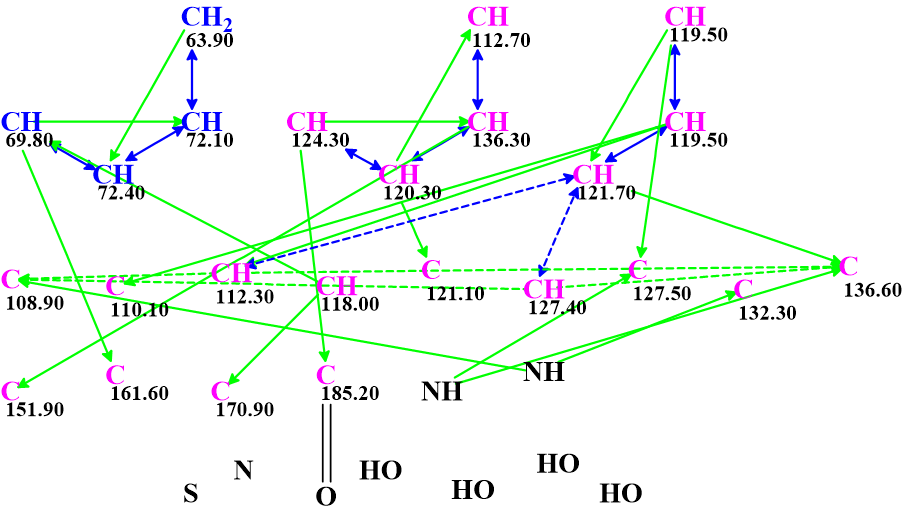
An attempt to run structure generation from the MCD showed that the number of key HMBC and COSY correlations was insufficient to provide the solution to the problem in a reasonable amount of time. This was expected as the molecule is hydrogen deficient, has DBE = 16 and contains 9 heteroatoms of different kinds. Taking into account that the indole moiety is present in all alkaloids isolated in [1] an indole fragment was manually defined in the MCD. Another evident fragment containing four hydroxyls was also introduced in the MCD (Figure 2) .
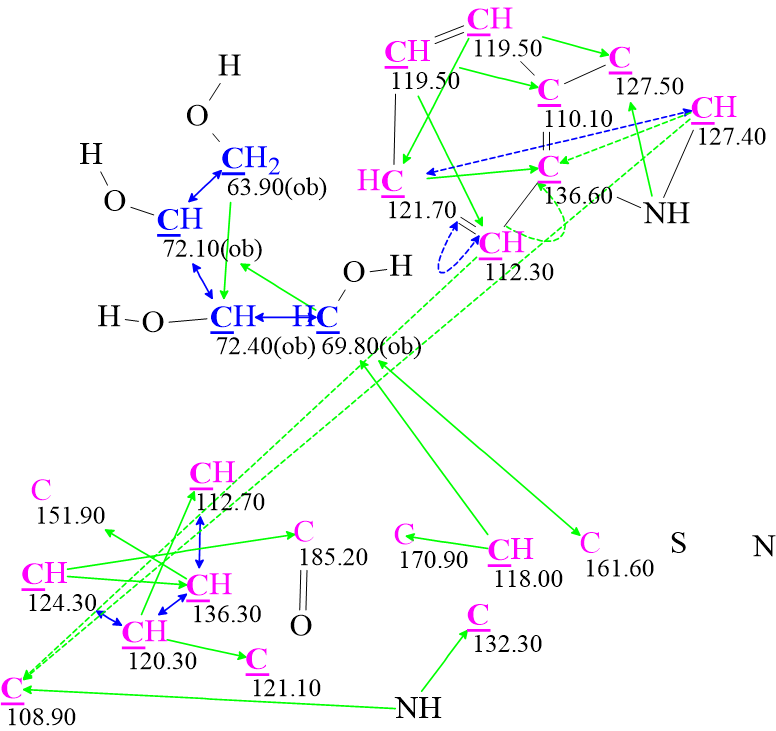
Structure generation from the modified MCD was completed with the following results:
k = 3344 → (structure filtering) → 148 → (removal of duplicates) → 136, tg = 11 s.
13C NMR chemical shift prediction was performed using the three approaches available in ACD/SE (Incremental, HOSE-codes based and Neural Network) and the output file was ranked in ascending order of average deviation values.
The top six structures of the ranked file are shown in Figure 3.
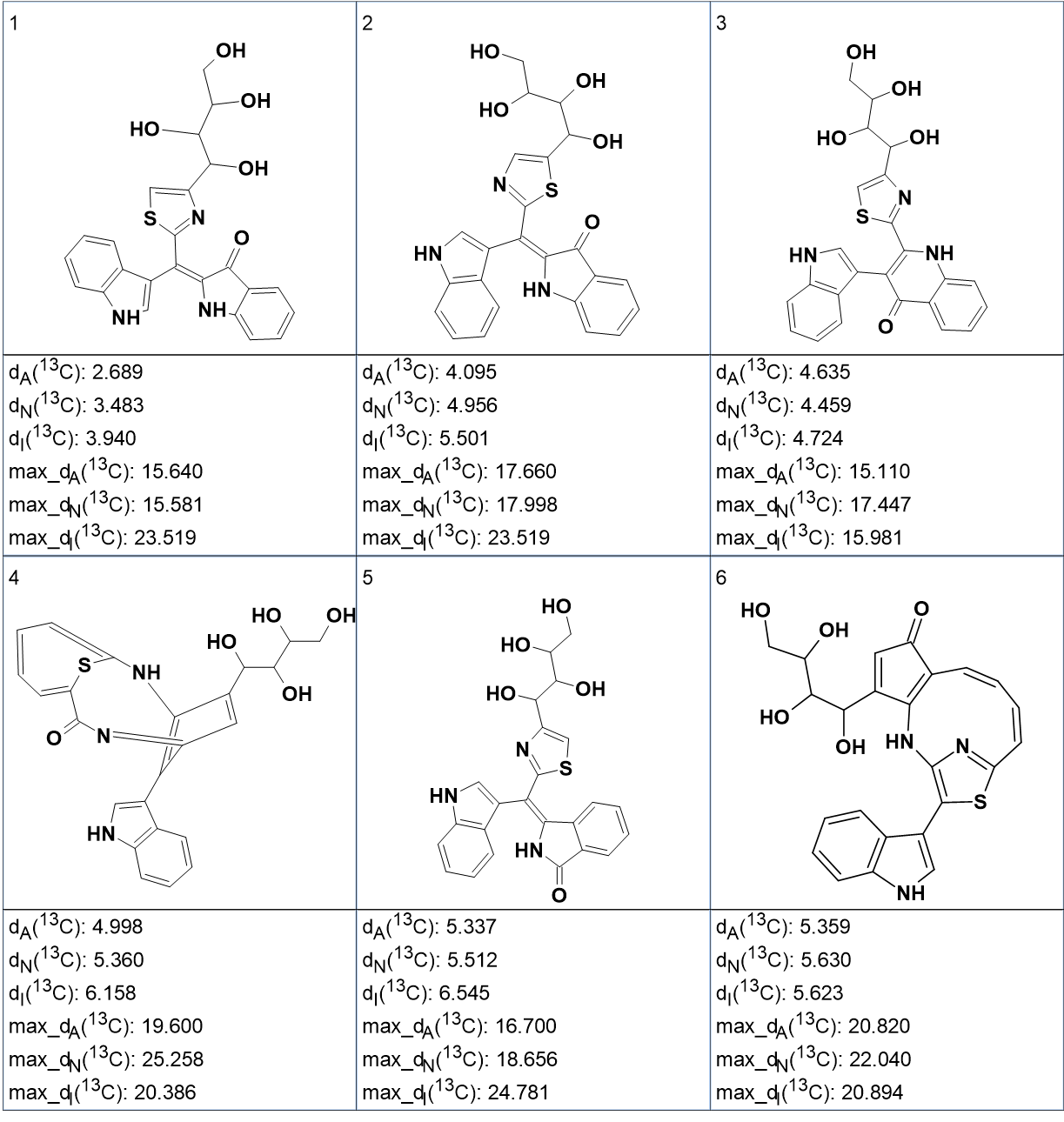
We see that the best structure coincides with structure 1, the one determined by the authors of [1]. However, the maximum deviation calculated for structure #1 is unusually large. Nevertheless, DP4-style probabilities calculated for structures #1–3 indicate that structure #1 is the most probable one (Figure 4). Note that structure #2 which is very similar to structure #1 was rejected by the chemical shift prediction, as the overall average deviations were much larger.
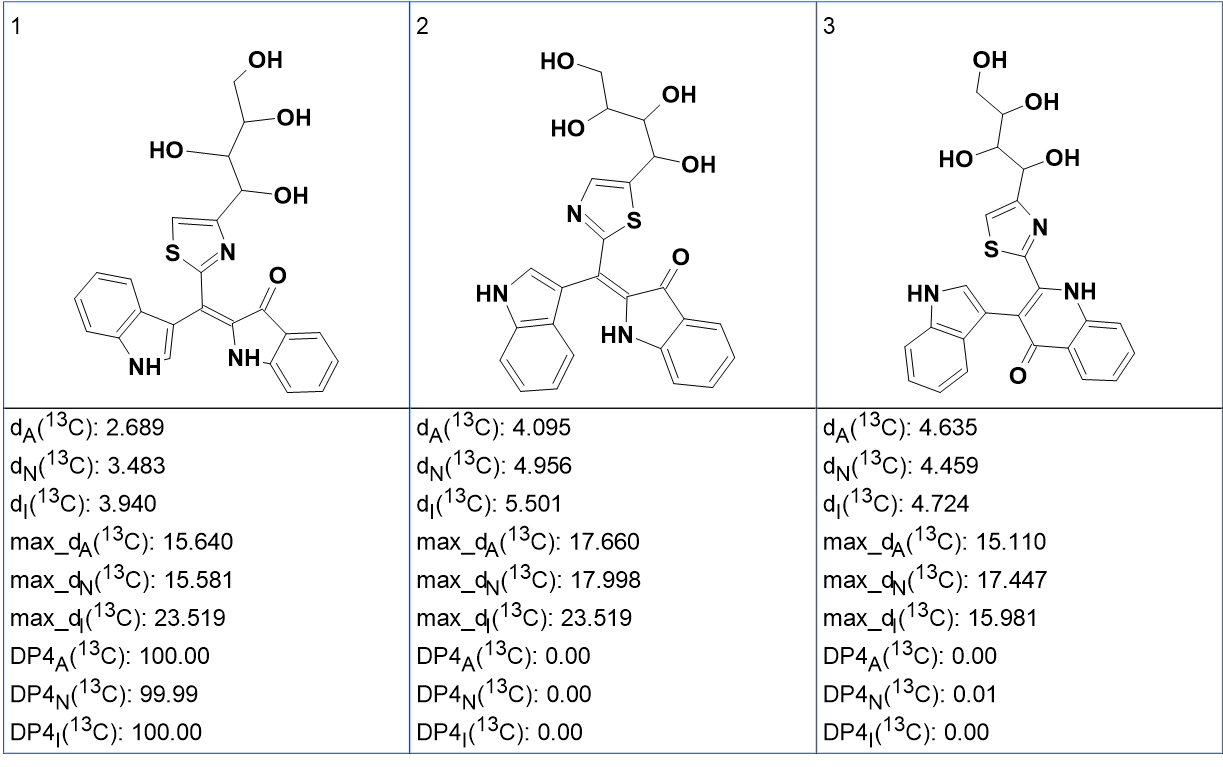
Structure 2, shown below, clearly illustrates the reason of the large maximum deviation.
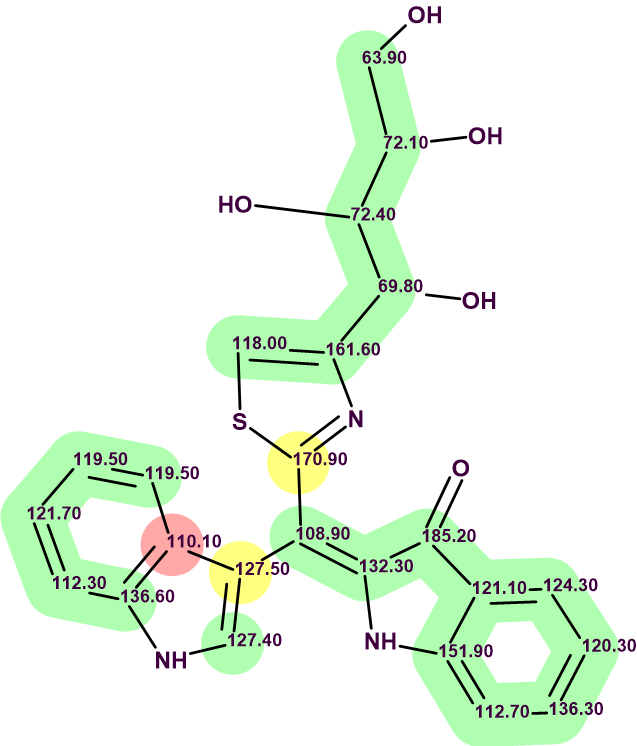
The carbon highlighted in red, has an experimental chemical shift of 110.10 ppm, according to the table in the article [1], but a predicted chemical shift of 125.74 ppm. However, comparing with the chemical shifts reported for all the other similar compounds in [1], we see that in all cases that carbon atom appears at around 127 ppm. So, it is quite probable that there was a typographic error in the article, and the frequency of that carbon was mistyped at 110.10 ppm while it is around 127 ppm, as with all the other compounds. If the corrected value of 127 ppm is entered in the program, as is in structure 3, we see that the carbon atom is now highlighted in green, confirming the validity of the structure.
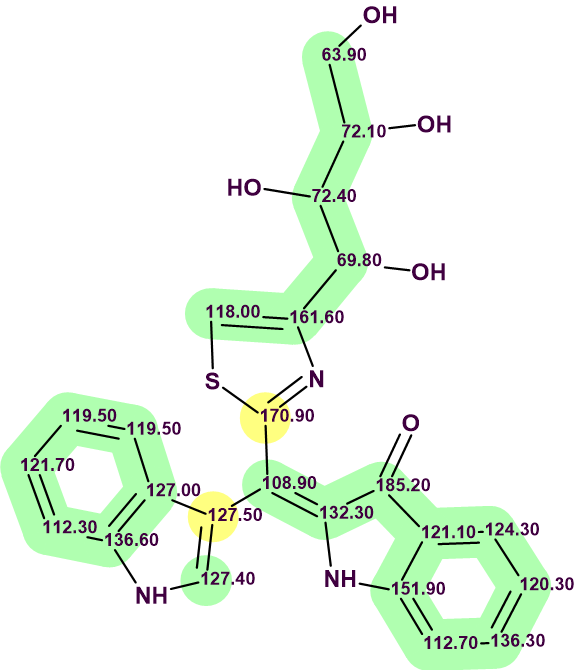
In conclusion, the correct structure of isatisindigoticanine I was confirmed by ACD/Structure Elucidator and a possible typographic error in the spectroscopic data presented in the article [1] was identified.
References:
- D. Zhang, D. Ruan, J. Li, Z. Chen, W. Zhu, F. Guo, K. Chen, Y. Li, R. Wang. (2020). Four undescribed sulfur-containing indole alkaloids with nitric oxide inhibitory activities from Isatis tinctoria L. roots. Phytochemistry, 174:112337.


